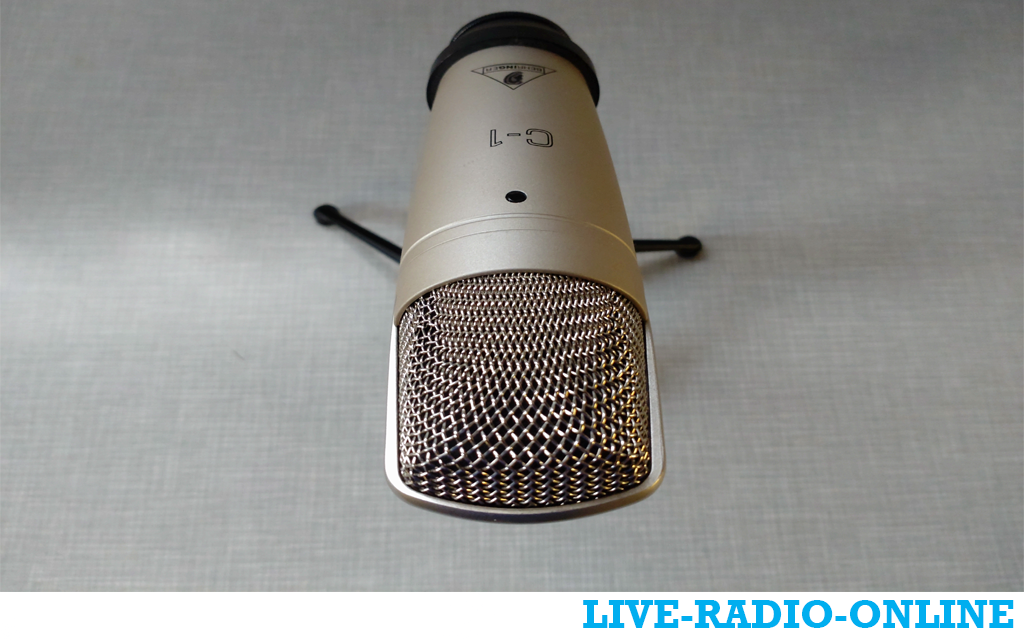
The Behringer C1 is a very popular and well-known entry-level large-diaphragm condenser microphone. Here's a detailed breakdown of everything you need to know about it.
Overview
The Behringer C1 is a budget-friendly studio condenser microphone designed for home recording. It's often one of the first mics aspiring musicians, podcasters, and voice-over artists buy due to its incredibly low price and decent performance for the cost.
Key Features & Specifications
-
Type: Large-Diaphragm Condenser (LDC)
-
Polar Pattern: Cardioid (Picks up sound from the front, rejects sound from the rear)
-
Frequency Response: 40 Hz – 20 kHz (This is the range of sounds it can capture)
-
Diaphragm Size: 1" (25.4 mm)
-
Max SPL: 140 dB (How loud a sound source it can handle before distorting)
-
Connector: 3-pin XLR (Requires an audio interface or mixer with 48V Phantom Power)
-
Finish: Classic "studio" look with a matte gray body and a black grille.
Pros and Cons
Pros (Why it's so popular):
-
Extremely Affordable: This is its biggest selling point. It provides a "real" studio microphone experience for a fraction of the cost of more established brands.
-
Decent Starter Sound: For its price, it can capture a surprisingly clear and detailed sound, especially on vocals and acoustic instruments, making it a huge step up from a USB gaming headset mic.
-
Versatility: It's a general-purpose studio mic suitable for:
-
Vocals (especially in a treated room)
-
Acoustic Guitar
-
Voice-Over & Podcasting
-
Recording other acoustic instruments
-
-
Build Quality: It feels surprisingly sturdy and well-built for its price point. It's not a toy.
Cons (The Reality Check):
-
Can Be Harsh/Bright: The C1 is known for a pronounced presence peak in the high frequencies. This can make vocals and acoustic guitars sound "crisp" or "detailed," but it can also easily become harsh, sibilant, or brittle, especially on voices that are already bright.
-
Requires Phantom Power: You cannot plug this directly into a computer. You must have an audio interface or mixer that can supply 48V phantom power.
-
No Accessories: It typically comes with just a basic shock mount. You will need to buy a good XLR cable and a proper mic stand separately.
-
Self-Noise: Like many budget condenser mics, its self-noise (the inherent electronic noise it produces) is higher than more expensive models. This isn't a huge issue for loud sources but can be noticeable in quiet passages.
Who Is The Behringer C1 For?
-
The Absolute Beginner: If you're just starting a home studio and have a very tight budget, the C1 is a legitimate way to get started.
-
Podcasters on a Budget: For a solo podcast in a quiet room, it will provide clean, intelligible voice audio.
-
Hobbyist Musicians: Great for demo recordings, capturing song ideas, and recording acoustic instruments.
Who Should Look Elsewhere?
-
Professionals: The sound quality isn't refined enough for commercial releases.
-
Those Recording in Noisy Rooms: As a sensitive condenser, it will pick up a lot of background noise, computer fans, and room reverb.
-
People with Harsh or Sibilant Voices: The high-frequency peak will likely exaggerate these problems.
-
Anyone Unwilling to Buy an Audio Interface: If you don't have phantom power, this mic is useless to you.
What You'll Need to Use It (The Essential Gear)
-
Audio Interface: This is non-negotiable. Examples include the Focusrite Scarlett Solo/2i2, PreSonus AudioBox, or Behringer's own UM2/UMC22.
-
XLR Cable: To connect the mic to the interface.
-
Mic Stand: A boom arm for a desk or a standard floor stand.
-
Pop Filter: Highly recommended to reduce plosives (p-pops and b-pops) and to tame some of the harshness.
How It Compares to the Competition
-
Behringer C1 vs. Audio-Technica AT2020: The AT2020 is the most common competitor. It's slightly more expensive but is generally considered to have a smoother, more balanced sound with less harsh high-end. For most people, the AT2020 is worth the small price jump.
-
Behringer C1 vs. Rode NT1 (or NT1-A): The Rode is in a different league and price bracket. It's much quieter, more detailed, and comes in a complete kit. This is the logical upgrade path.
-
Behringer C1 vs. USB Microphones: The C1 (with an interface) will generally provide better audio quality and more flexibility for future upgrades than a similarly priced USB mic.
Final Verdict
The Behringer C1 is a classic "you get what you pay for" microphone.
It's an excellent and revolutionary tool for absolute beginners who need the cheapest possible entry into XLR recording. It proves that you can get a functional large-diaphragm condenser for a remarkably low price.
However, its sonic limitations (brightness/harshness) mean that most users will outgrow it quickly as their skills and ears develop. If your budget can stretch an extra $20-$50, competitors like the Audio-Technica AT2020 or Samson C01 are often better-sounding choices. But if the C1 is all you can afford, it will absolutely get you started on your audio journey.


